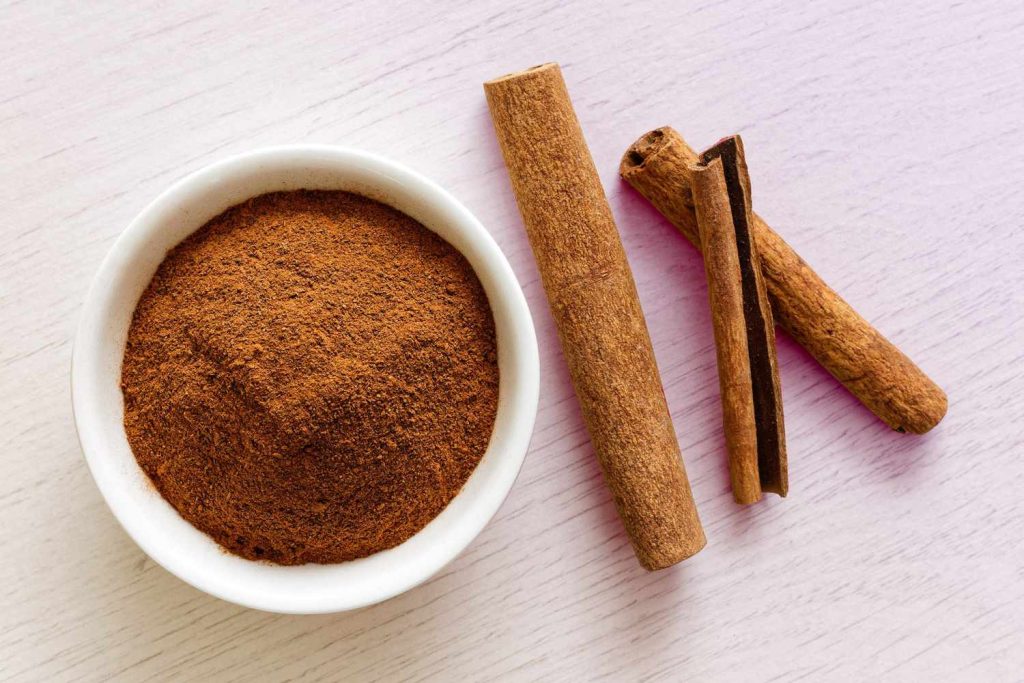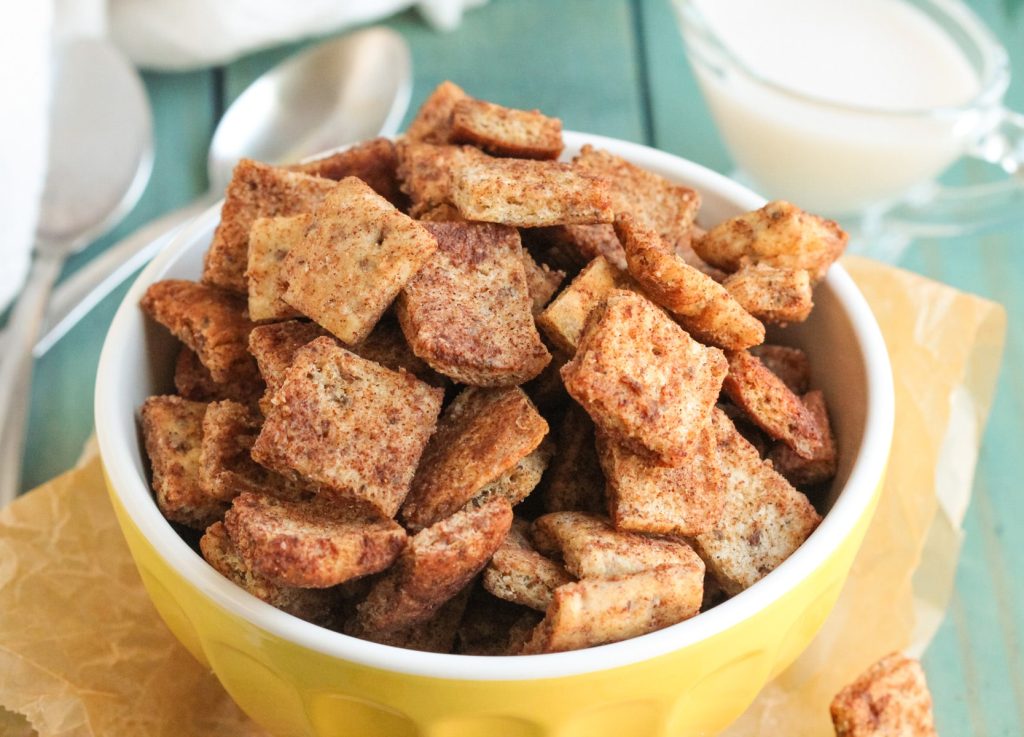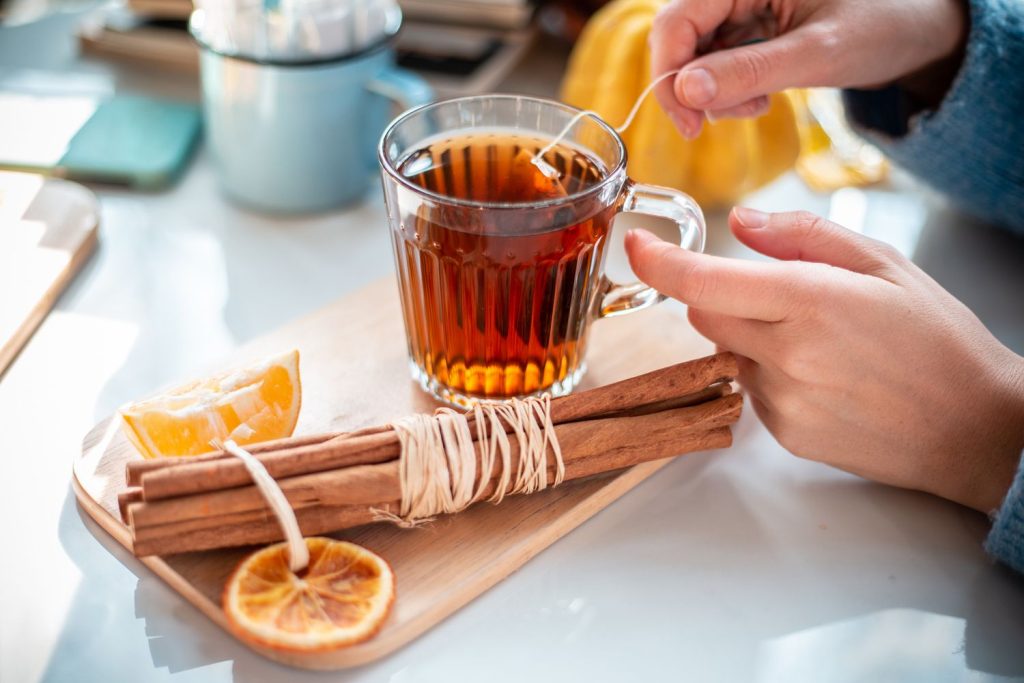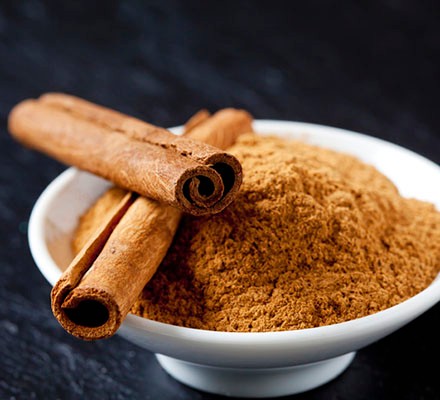Cinnamon, a beloved spice known for its warm and comforting flavor, is a kitchen staple and boasts a rich history and a range of potential health benefits.

In this article, we aim to demystify cinnamon by addressing people’s common inquiries about it. We cover various topics, from the different types of cinnamon (Ceylon and Cassia) to its culinary uses in sweet and savory dishes. We also delve into its potential health advantages, such as its role in blood sugar management and its antioxidant properties.
Types of Cinnamon
Cinnamon comes in several different types, with two main varieties being the most widely recognized: Ceylon cinnamon (Cinnamomum verum or “true cinnamon”) and Cassia cinnamon (Cinnamomum cassia or “Chinese cinnamon”). These two types have distinct characteristics and are used in various culinary and medicinal applications.

- Ceylon Cinnamon (Cinnamomum verum): It is often called “true cinnamon” due to its authentic and mild flavor profile. It is native to Sri Lanka but is also grown in parts of India, Madagascar, and the Caribbean. Ceylon cinnamon has delicate, sweet, and citrusy notes, making it ideal for desserts, beverages, and dishes where a subtle cinnamon flavor is desired. It is light tan and easily crumbles into thin, delicate quills or layers.
- Cassia Cinnamon (Cinnamomum cassia): Cassia cinnamon is the more common variety and is widely used in the United States and other parts of the world. It is primarily produced in China, Indonesia, and Vietnam. Cassia cinnamon has a more robust, spicier flavor with a hint of bitterness. Its dark reddish-brown color and thick, hard bark distinguish it from Ceylon cinnamon. It is commonly used in baking, candies, and spiced beverages like mulled wine due to its robust taste.
Can you eat Cinnamon?
You can eat cinnamon. Cinnamon is a popular spice used in various culinary applications worldwide. It adds flavor and aroma to various dishes, including desserts, beverages, curries, and more. People commonly consume cinnamon in ground form or as cinnamon sticks (quills).
However, using cinnamon in moderation is essential because it has a strong and sometimes spicy flavor. Consumed in excess, it can be overpowering. Additionally, some individuals may be sensitive or allergic to cinnamon, so it’s advisable to be cautious if you have any known allergies or sensitivities.

What does cinnamon dolce taste like?
Cinnamon Dolce is a flavor often associated with coffee and coffee-based beverages, particularly at Starbucks. Cinnamon Dolce flavor typically tastes like a combination of sweet, warm cinnamon and rich, buttery caramel. It has a cozy, comforting profile, with the sweetness of caramel complemented by the spicy warmth of cinnamon.
The result is a harmonious blend of sweet and spicy notes reminiscent of a cinnamon bun or a dessert-like coffee treat. It’s a popular choice for lattes and other coffee concoctions, offering a comforting and indulgent flavor that’s well-loved by those who enjoy a touch of sweetness and spice.
Can you reuse cinnamon sticks?
Yes, you can reuse cinnamon sticks. After using them in a recipe or beverage, such as tea or mulled wine, you can rinse and dry the cinnamon sticks to remove any residue. Once they are dry, store them in an airtight container to maintain their freshness. When you’re ready to reuse them, add the sticks to a new recipe or beverage.
While the flavor may be slightly diminished with each use, cinnamon sticks can often be reused several times before their taste becomes too subtle. They are a sustainable way to get the most out of this aromatic spice, making them cost-effective and environmentally friendly.

Also Read – Keto Cinnamon Rolls: A Delectable Journey into Low-Carb Indulgence
Will cinnamon break a fast?
Cinnamon is low in calories and doesn’t contain significant macronutrients, so it’s unlikely to break a fast in caloric intake. However, it can mildly impact insulin levels because it may improve insulin sensitivity. This can benefit some individuals during intermittent fasting, as it may help stabilize blood sugar levels.
Still, if you’re fasting for specific health or dietary reasons, it’s essential to consult with a healthcare professional or nutritionist. Remember that adding substantial amounts of other ingredients, such as sugar or high-calorie additives, to cinnamon could break a fast by providing calories and stimulating insulin release.
Is cinnamon flammable?
Cinnamon itself is not inherently flammable under normal circumstances. It’s a spice made from the dried inner bark of cinnamon trees and primarily consists of cellulose and essential oils, which are not highly flammable. However, there are a few factors to consider:

- Dust Hazard: Cinnamon powder can become flammable in dust-like finely powdered substances. If cinnamon powder is dispersed into the air in sufficient quantities and comes into contact with an open flame or spark, it can ignite. This is a general characteristic of many fine organic powders.
- Cinnamon Oil: Cinnamon essential oil, which is highly concentrated, does have flammable properties. The high concentration of flammable compounds in the oil can make it combustible when exposed to an open flame or heat source.
Cinnamon is not considered a fire hazard in average kitchen or culinary use. However, if you’re working with large quantities of cinnamon powder in an industrial or commercial setting, it’s essential to avoid creating a potentially flammable dust cloud. Proper ventilation and fire safety measures should be followed in such cases.
Where to buy gluten-free cinnamon rolls?
You can find gluten-free cinnamon rolls at various places, including:
- Grocery Stores: Many larger grocery store chains have dedicated gluten-free sections to find frozen or refrigerated gluten-free cinnamon roll dough or fully baked rolls.
- Health Food Stores: Stores specializing in natural and organic products often carry gluten-free baked goods, including cinnamon rolls.
- Online Retailers: Websites like Amazon, Thrive Market, and specialty gluten-free retailers offer a wide range of gluten-free cinnamon roll options that can be delivered to your doorstep.
- Bakeries: Some local or specialty bakeries may offer gluten-free cinnamon rolls. Check with bakeries in your area or inquire if they can make them to order.
- Gluten-Free Brands: Look for established gluten-free brands like Udi’s, Canyon Bakehouse, and Schar, which offer gluten-free cinnamon rolls and other baked goods in stores and online.

Keto Cinnamon Rolls: A Delectable Journey into Low-Carb Indulgence
Is cinnamon toast crunch good for weight loss?
Cinnamon Toast Crunch, a popular breakfast cereal, is not typically considered a weight-loss-friendly food. While it contains cinnamon, which can benefit blood sugar control, the cereal is primarily a sugary, processed product. It’s high in added sugars and refined carbohydrates, which can lead to blood sugar spikes and cravings, potentially hindering weight loss efforts.
For effective weight loss, it’s generally recommended to focus on a balanced diet rich in whole foods like fruits, vegetables, lean proteins, and whole grains while limiting sugary and highly processed foods. If you enjoy the flavor of cinnamon, consider incorporating it into healthier meals and snacks rather than relying on sugary cereals.

Cinnamon-Sugar Ratio: A Culinary Exploration
Can cinnamon tea break a fast?
When prepared without added sugars or calorie-laden ingredients, Cinnamon tea is generally considered safe to consume during a fast. Fasting typically involves abstaining from caloric intake, and herbal teas like cinnamon tea are often permitted because they are very low in calories.
Cinnamon tea can be a helpful addition to your fasting routine for several reasons. Firstly, it has a mild, natural sweetness that can help satisfy cravings and reduce the urge to consume high-calorie foods. Secondly, cinnamon may have potential health benefits, such as helping regulate blood sugar levels and improving insulin sensitivity, which could be especially valuable during a fast.
However, being mindful of how you prepare your cinnamon tea is essential. To ensure it doesn’t break your fast, avoid adding sugar, honey, or other sweeteners containing calories. Stick to plain water and cinnamon sticks or cinnamon powder for flavor.

Spice Symphony: Exploring Cinnamon’s Culinary Versatility and Perfect Pairings
Is cinnamon a nut?
Cinnamon is not a nut; it is a spice derived from the bark of trees in the Cinnamomum genus, primarily Cinnamomum verum (Ceylon cinnamon) and Cinnamomum cassia (cassia cinnamon). The confusion may arise from the fact that cinnamon has a nutty, warm, and slightly sweet flavor, which can be reminiscent of nuts, but it is botanically distinct from nuts.

Cinnamon is harvested by cutting the inner bark of the cinnamon tree and then letting it dry. Once dried, the bark curls into the familiar cinnamon sticks or quills, which can be ground into a powder.
This Ground cinnamon is a common ingredient in various culinary and baking recipes, appreciated for its aromatic and flavor-enhancing qualities.
Conversely, nuts are seeds or fruits enclosed in a hard shell, like almonds, walnuts, and pecans. They are botanically different from spices like cinnamon. While cinnamon and nuts are used in cooking and share flavor profiles in some dishes, they are distinct in their botanical origins and classifications. People with nut allergies need not worry about cinnamon, as it is not a nut and is typically safe for consumption in most cases.
Recommended Reading – Sipping Cinnamon: Exploring the Diverse World of Cinnamon-Infused Beverages
